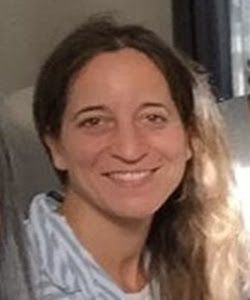Lecture 36: Julia Contreras-Garcia
CONSTRUCTING NEW MODELS TO PREDICT SUPERCONDUCTIVITY FROM THE ELECTRON DENSITY AND LOCALIZATION
Julia Contreras-Garcia
Directrice de Recherche au CNRS, Laboratoire de Chimie Théorique
Université Pierre et Marie Curie, Paris, France
A room temperature superconductor is probably the most desired system in solid state physics. So far, the greatest advances, cuprates, pnictides and number of others were obtained in a serendipitous way. As there is no clear theory for these superconductors, it is difficult to predict where progress will be made. In contrast the Bardeen-Cooper-Schrieffer (BCS)theory gives a clear guide for achieving high Tc, and hydrogen seems to be a main clue. Within this approach, the recently reported superconductivity at 190 K in compressed H2S [1] has been arguably the biggest discovery in the field since the superconducting cuprates nearly 30 years ago.
However, a microscopic understanding of why this particular material features such a strong coupling is still missing. We have recently shown
that the underlying chemical structure and bonding need to be
characterized for a good comprehension of the chemical composition-superconductivity relation.
We have constructed simple metal and BCS models showing that the Electron Localization Function [2] can be used to define a quantity called the networking value, which should provide insight into the superconducting
activity.
By analyzing through DFT calculations the structural and electronic properties of nearly 200 compounds predicted to be superconductors in the
literature, we have shown that the networking value correlates well with
the predicted critical temperature, much better than any other descriptor
analyzed thus far. And this, for all bonding types [3].
The discovery of the positive correlation between superconductivity and
the bonding network offers the possibility of screening easily
hydrogen-based compounds and, at the same time, sets clear paths for
chemically engineering better superconductors.
References
[1] A. P. Drozdov, M. I. Eremets, I. A. Troyan, V. Ksenofontov, and S. I.
Shylin. Conventional superconductivity at 203 kelvin at high pressures in the sulfur hydride system. Nature 2015, 525, 73
[2] A. D. Becke and K. E. Edgecombe. A simple measure of electron localization in atomic and molecular systems. The Journal of Chemical Physics 1990, 92, 5397
[3] F. Belli, T. Novoa, J. Contreras-Garcia and I. Errea, Strong
correlation between electronic bonding network and critical temperature in
hydrogen-based superconductors. Nature Comm. 2021, 12, 5381


